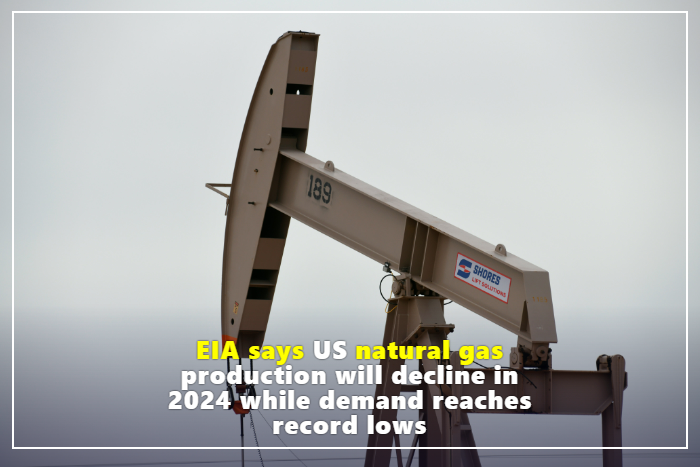Askume, Sep 10 – US natural gas production will decline by 2024 while demand will reach a record high, the US Energy Information Administration (EIA) said in its Short-Term Energy Outlook (STEO) on Tuesday.
The EIA expects dry gas production to fall from a record 103.8 billion cubic feet per day (bcfd) in 2023 to 103.4 bcfd in 2024 as natural gas prices for the Henry Hub benchmark fell to a 25-year low in March.
The EIA expects production to rise to 104.8 bcfd in 2025.
The agency also expects domestic natural gas consumption to rise from a record 89.1 bcfd in 2023 to 89.9 bcfd in 2024 and decline to 89.5 bcfd in 2025.
If the forecast is correct, 2024 will see production fall for the first time since 2020, when the COVID-19 pandemic slashed fuel demand. It would also be the first time since 2016 that demand has risen for four consecutive years.
The latest forecast for 2024 is higher than the EIA’s August forecast, which estimated supply at 103.3 bcfd and consumption at 89.8 bcfd.
In Appalachia, the largest US shale gas basin spanning Pennsylvania, Ohio and West Virginia, saleable (wet) natural gas production will fall from 35.4 bcfd in August to 35.3 bcfd in September. In November and December 2023, Appalachian production set a monthly record of 37.1 bcfd.
The agency expects US liquefied natural gas (LNG) exports to average 12.1 bcfd in 2024 and 14.1 bcfd in 2025, up from a record 11.9 bcfd in 2023.
This is lower than EIA’s August LNG export forecast of 12.2 bcfd.
The agency expects US coal production to fall from 577.5 million short tons in 2023 to 501.0 million short tons in 2024, the lowest level since 1963, and to 475.1 million tons in 2025, the lowest level since 1962 levels.
The EIA estimates that carbon dioxide (CO2) emissions from fossil fuels will rise from 4.793 billion tons in 2023 to 4.809 billion tons in 2024 due to increased use of natural gas, and to 4.821 billion tons by 2025 due to increased use of oil.
This means that by 2025, carbon emissions will peak within five years, before falling to 4.584 billion tonnes in 2020, the lowest level since 1983, amid a massive drop in energy demand caused by the pandemic.
Carbon emissions will also decrease in 2023 as power companies will burn less coal.










